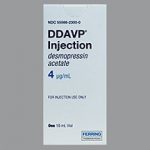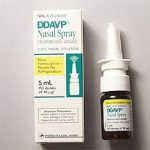
Contents
- 1 Esophageal pH Monitoring
- 1.0.1 When is esophageal pH monitoring used?
- 1.0.2 How is esophageal pH monitoring performed?
- 1.0.3 How is esophageal pH monitoring used?
- 1.0.4 Are there other uses for pH monitoring?
- 1.0.5 What are the limitations of esophageal pH monitoring?
- 1.0.6 What are the side effects of esophageal pH monitoring?
- 1.0.7 Are there alternatives to esophageal pH monitoring?
Esophageal pH Monitoring
Esophageal pH monitoring measures the reflux of acid from the stomach into the esophagus, a symptom of gastroesophageal reflux disease (GERD).
When is esophageal pH monitoring used?
Esophageal pH monitoring diagnoses GERD, evaluates the effectiveness of medications for acid reflux, and determines if acid reflux causes chest pain.
pH monitoring also detects if acid reaches the pharynx, potentially causing symptoms like cough, hoarseness, and sore throat.
How is esophageal pH monitoring performed?
Esophageal pH monitoring involves passing a thin plastic catheter through one nostril, down the throat, and into the esophagus while the patient swallows. The catheter has a sensor placed just above the lower esophageal sphincter, which prevents acid from refluxing back up. The sensor records each acid reflux event, while the catheter is connected to a recorder.
During the 24-hour test, the patient carries the catheter and recorder. They record meals, sleep, and symptoms in a diary or by using the recorder. Later, the data is analyzed and displayed in a graph after the catheter is removed and connected to a computer. The sensor position can be adjusted to detect pharyngeal acid reflux.
The latest pH monitoring device, called the Bravo Capsule, consists of an acid-sensing probe, a battery, and a transmitter. It is inserted into the esophagus via a catheter and attached with a clip. The capsule transmits data to a recorder worn by the patient for two to three days before the battery dies. The capsule is then passed naturally and is not reusable.
The capsule offers better comfort and discretion without a protruding catheter. However, it cannot be used in the pharynx or the stomach.
How is esophageal pH monitoring used?
Normal reflux is common but rarely causes esophagitis. Increased acid reflux probability corresponds to a higher risk of esophagitis and related symptoms. To diagnose acid reflux, the esophagus must show abnormal acid pH for a prolonged period in patients with acid reflux symptoms.
An alternative diagnostic method is treating the patient with reflux medication and evaluating symptom improvement. If symptoms subside, it suggests acid reflux as the cause. Corroborating acid reflux episodes and esophageal pain further supports acid reflux as the cause of symptoms.
pH monitoring can also identify why reflux treatment is ineffective. If a pH monitoring study shows abnormal levels of reflux while the patient is on medication, it indicates inadequate treatment. If reflux levels remain within the normal range, other potential causes for the symptoms should be considered.
Are there other uses for pH monitoring?
When the pH sensor is placed in the stomach, it can assess the efficacy of acid-suppressing medications. This information helps determine proper medication doses for stomach and duodenal acid-related conditions like peptic ulcers.
In patients experiencing unexplained symptoms of sore throat, hoarseness, or cough, the pH sensor can be positioned in the upper esophagus or pharynx. If acid reflux is detected in these areas, it suggests acid reflux as the potential cause of the symptoms, although recent studies have cast doubt on this association’s reliability.
What are the limitations of esophageal pH monitoring?
Abnormal acid reflux levels do not definitively prove that the symptoms are caused by reflux alone. Only when treatment with reflux medications significantly reduces symptoms can reflux be confirmed as the cause. However, it is crucial to note that treatment can elicit a placebo response. About 10% to 20% of patients without acid reflux report symptom improvement with anti-reflux medications. Therefore, a positive response to treatment does not conclusively prove acid reflux as the underlying cause.
Strong evidence linking episodic chest pain to acid reflux comes from demonstrating a synchronization between painful episodes and acid reflux. However, if reflux episodes occur frequently, it can be challenging to discern a genuine association from a mere chance association due to the high frequency of reflux episodes.
Conversely, if a symptom occurs infrequently (e.g., once every few days), it is unlikely to coincide with a routine 24-hour monitoring period, making correlation impossible. Extended monitoring over several days can address this issue, but it is rarely done.
What are the side effects of esophageal pH monitoring?
Esophageal pH monitoring has minimal side effects. Some patients may experience mild discomfort in the throat while the catheter is in place, particularly during swallowing. However, most patients can eat, sleep, and carry out daily activities without difficulty.
While wearing the catheter, patients may choose not to go to work due to self-consciousness regarding the protruding nose catheter. The capsule device may cause chest discomfort when swallowing due to the passage of food or the esophageal contractions affecting the attached capsule.
Are there alternatives to esophageal pH monitoring?
There are no alternatives to obtain the information provided by esophageal pH monitoring. However, if esophagitis is visually detected during an endoscopy in patients without other identifiable causes of esophageal pain, it strongly indicates acidic reflux, potentially eliminating the need for pH monitoring.


